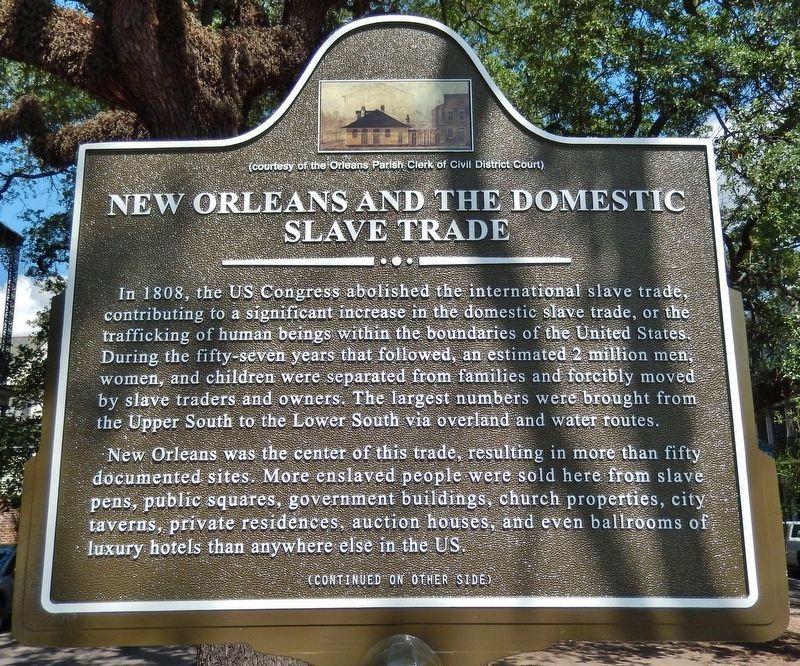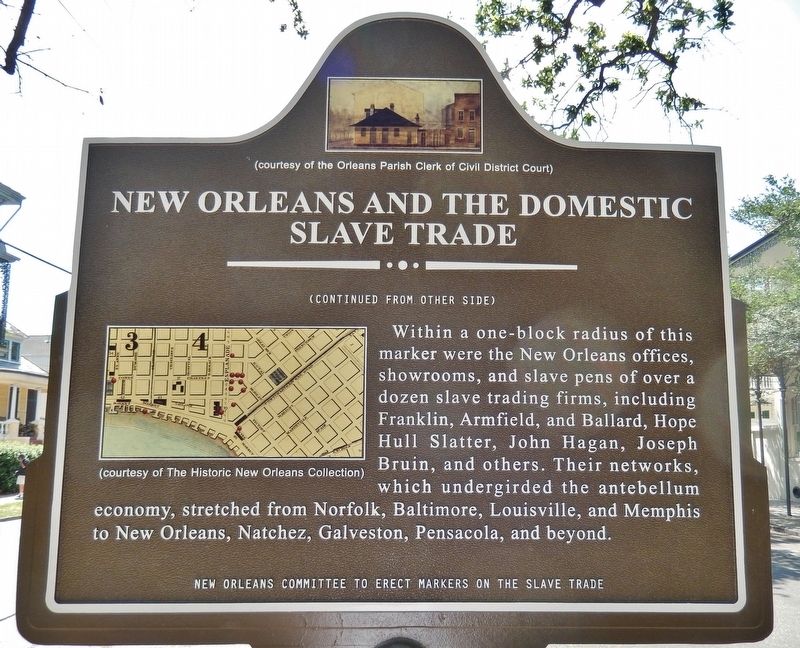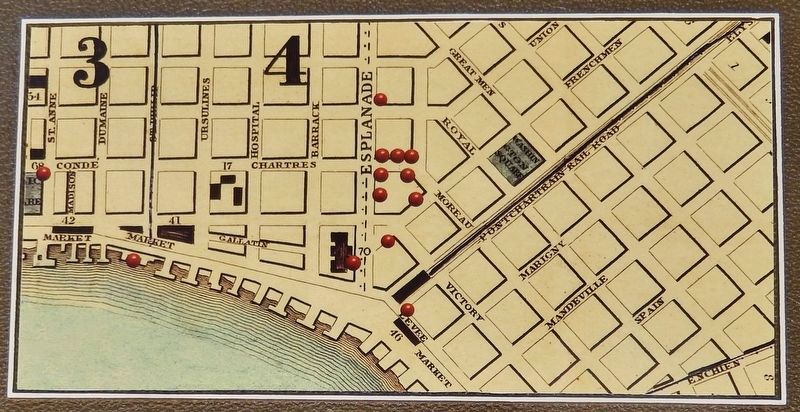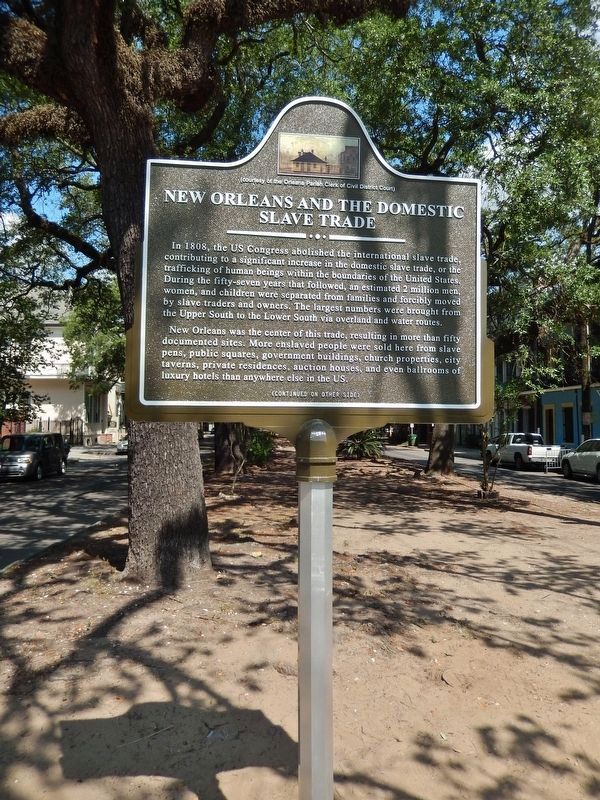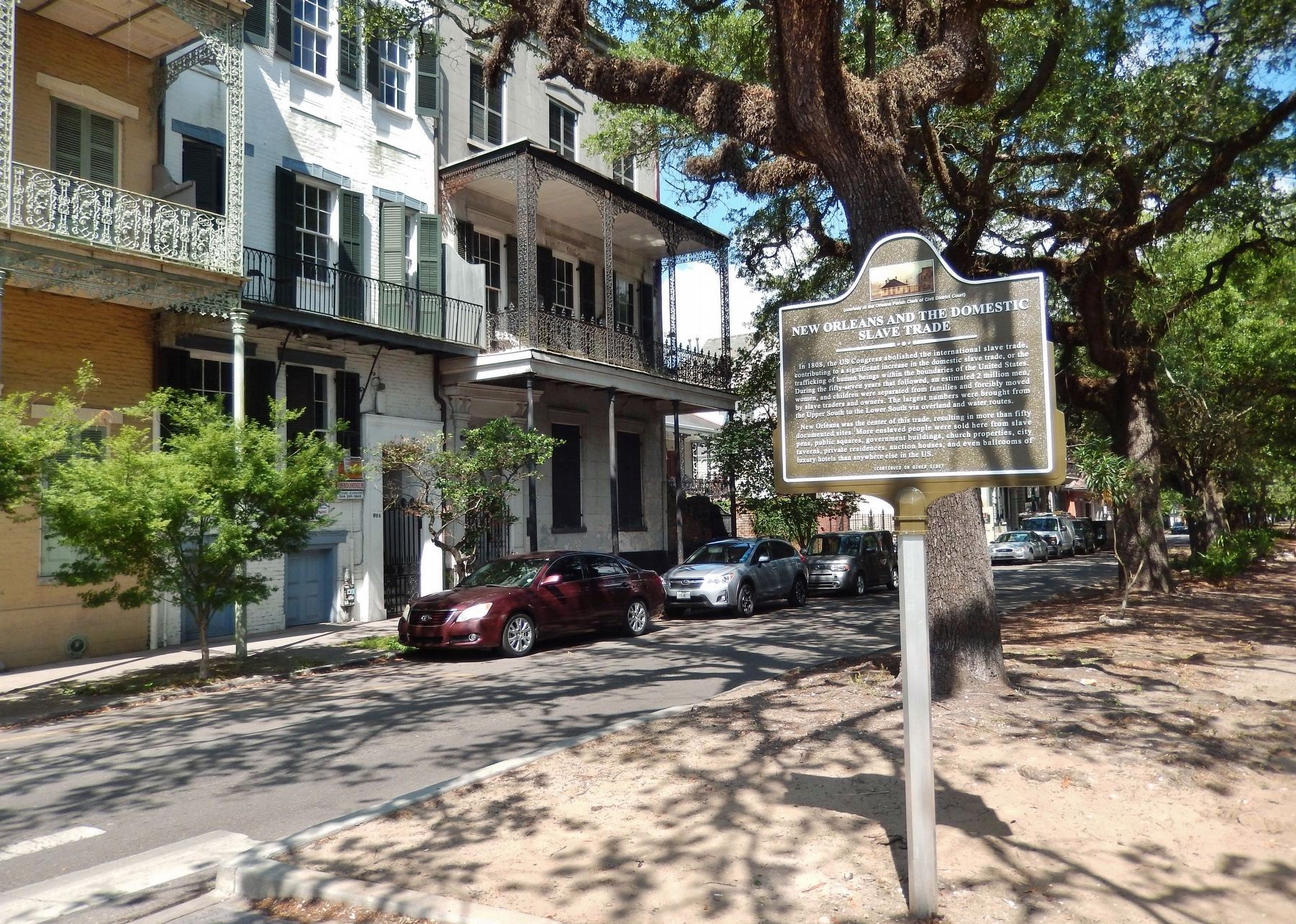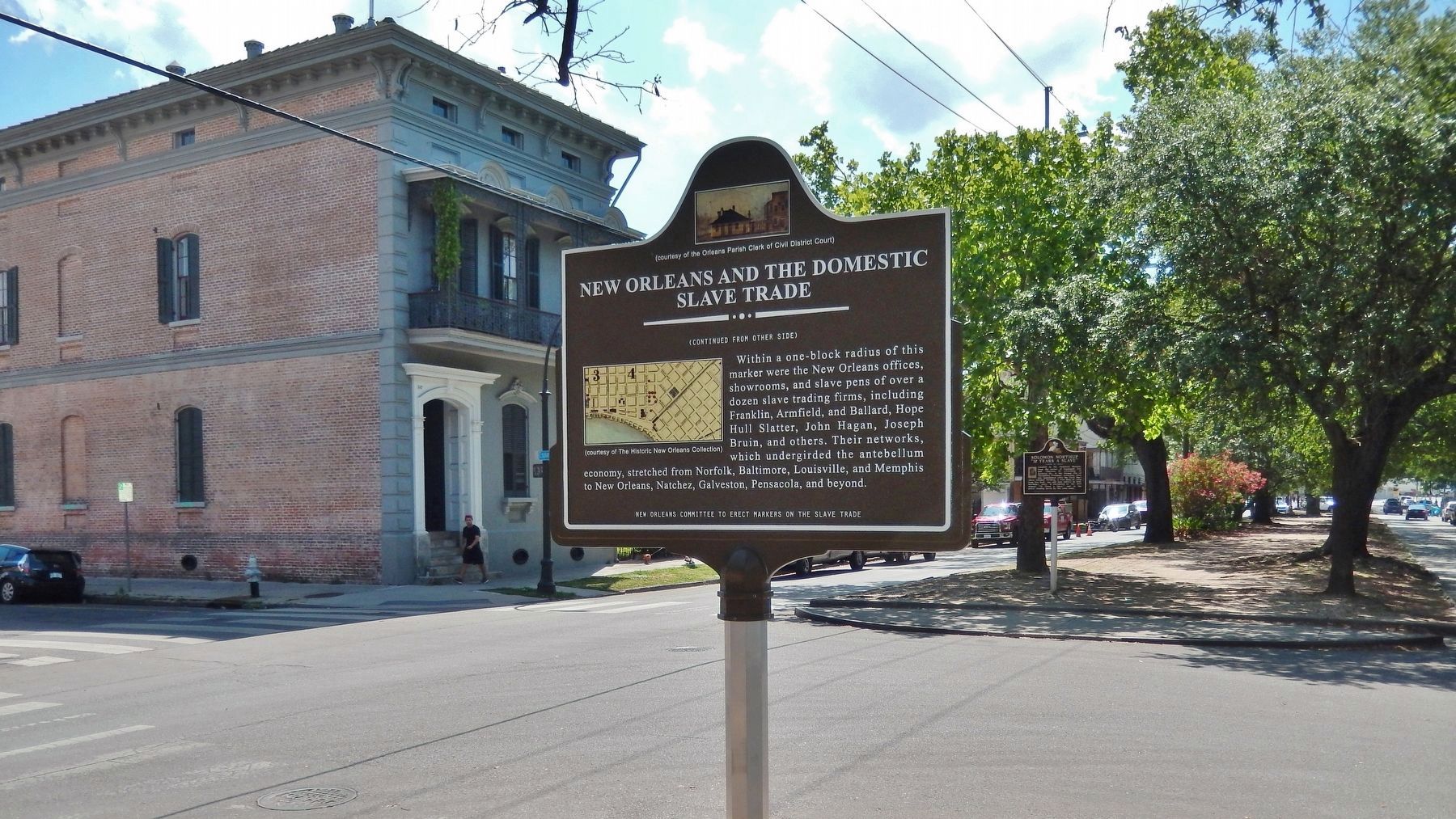Marigny in New Orleans in Orleans Parish, Louisiana — The American South (West South Central)
New Orleans and the Domestic Slave Trade
Inscription.
(front side)
In 1808, the US Congress abolished the international slave trade, contributing to a significant increase in the domestic slave trade, or the trafficking of human beings within the boundaries of the United States. During the fifty-seven years that followed, an estimated 2 million men, women, and children were separated from families and forcibly moved by slave traders and owners. The largest numbers were brought from the Upper South to the Lower South via overland and water routes.
New Orleans was the center of this trade, resulting in more than fifty documented sites. More enslaved people were sold here from slave pens, public squares, government buildings, church properties, city taverns, private residences, auction houses, and even ballrooms of luxury hotels than anywhere else in the US.
Erected 2018 by New Orleans Committee to Erect Markers on the Slave Trade. (Marker Number Site 5.)
Topics. This historical marker is listed in this topic list: African Americans. A significant historical year for this entry is 1808.
Location. 29° 57.771′ N, 90° 3.547′ W. Marker is in New Orleans, Louisiana, in Orleans Parish. It is in Marigny. Marker is at the intersection of Esplanade Avenue and Chartres Street, in the median on Esplanade Avenue. Touch for map. Marker is in this post office area: New Orleans LA 70116, United States of America. Touch for directions.
Other nearby markers. At least 8 other markers are within walking distance of this marker. Solomon Northup (a few steps from this marker); Denis House (within shouting distance of this marker); Bringier – Barnett House (within shouting distance of this marker); The Lamothe House (within shouting distance of this marker); Gauche House (about 400 feet away, measured in a direct line); Sicilian Jazz / Sicilian Swing & Rock n’ Roll (about 500 feet away); Fauboug Marigny (about 500 feet away); Dominique Bouligny House (about 600 feet away). Touch for a list and map of all markers in New Orleans.
Related markers. Click here for a list of markers that are related to this marker. New Orleans Slave Trade
Also see . . .
1. As New Orleans Turns 300, City to Mark Slave Trade Sites. Between 1804 and 1862, more than 100,000 people were bought and sold in New Orleans. Families
were torn apart; one third of the sales were of children younger than 13. (Submitted on May 11, 2018, by Cosmos Mariner of Cape Canaveral, Florida.)
2. Slavery in New Orleans. An 1849 map shows more than 50 slave markets all around the city. An engraving depicts a slave auction being held in the rotunda of the St. Louis Hotel, which occupied the French Quarter site where the Omni Royal Orleans Hotel stands. A ship's manifest showing slaves bound for New Orleans includes Plat Hamilton, the new name given to Solomon Northup, who had been kidnapped and sold into bondage. His memoir, "12 Years a Slave," was the basis of an Oscar-winning movie. (Submitted on May 11, 2018, by Cosmos Mariner of Cape Canaveral, Florida.)
Credits. This page was last revised on February 12, 2023. It was originally submitted on May 11, 2018, by Cosmos Mariner of Cape Canaveral, Florida. This page has been viewed 2,041 times since then and 220 times this year. Last updated on May 15, 2018, by Cosmos Mariner of Cape Canaveral, Florida. Photos: 1, 2, 3, 4, 5, 6. submitted on May 11, 2018, by Cosmos Mariner of Cape Canaveral, Florida. • Andrew Ruppenstein was the editor who published this page.
